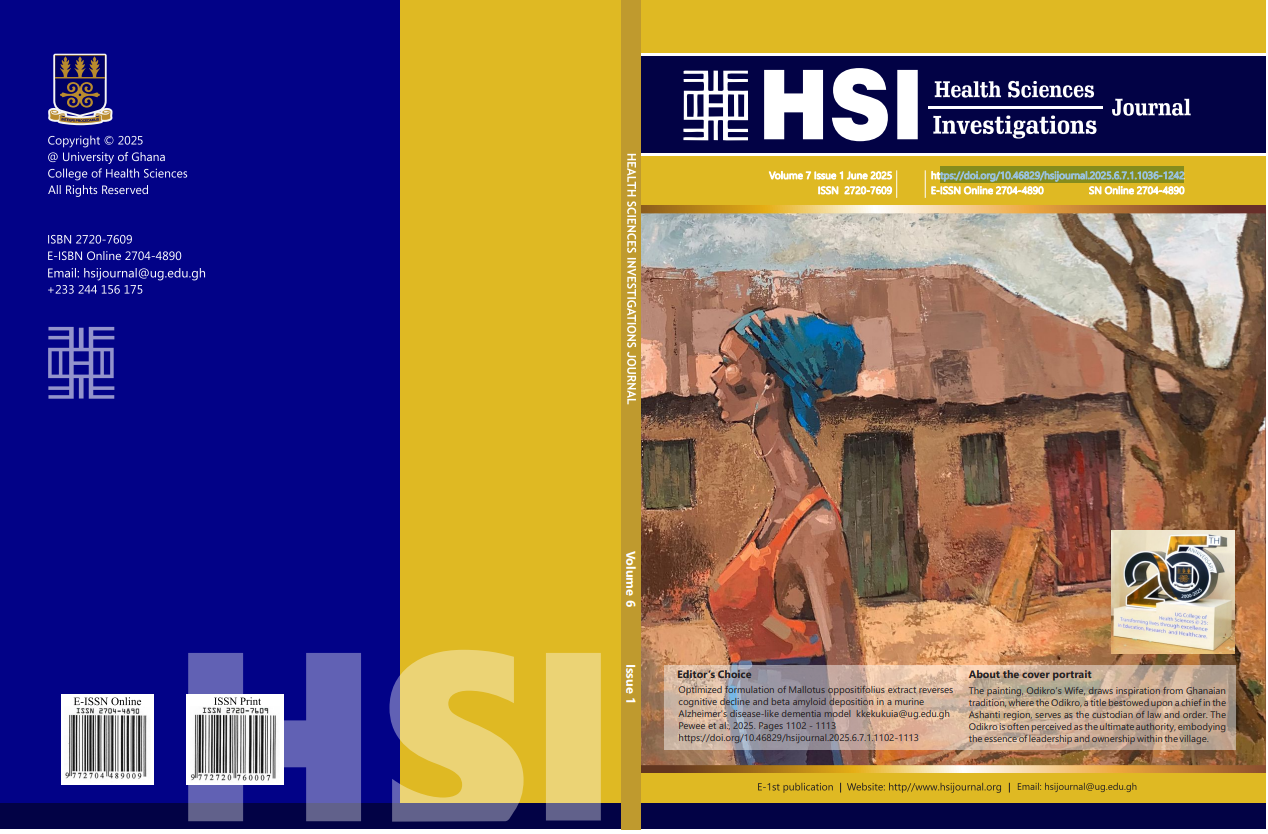Occurrence and Antimicrobial Resistance of Extended- Access Spectrum Beta-Lactamase Producing Bacteria in Diabetic Foot Infections at Korle-Bu Teaching Hospital
Extended spectrum beta-lactamase producers in diabetic foot infections
Abstract
Background: Common complications of diabetes mellitus include foot infections, leading to increased healthcare costs and delayed wound healing. Diabetic foot infections (DFIs) can be caused by Gram-negative, Extended-Spectrum Beta-Lactamase (ESBL)-producing bacteria, which are resistant to a wide range of antibiotics used in clinical medicine. This poses a significant challenge to treating DFIs. Availability of data on such bacterial species is therefore crucial in the management of these infections.
Objective: This study investigated the antimicrobial resistance and molecular characteristics of ESBL-producing bacteria from diabetic foot ulcers at Korle Bu Teaching Hospital (KBTH) using disk diffusion and PCR.
Methods: Tissue samples, aspirates or pus were collected from diabetic patients in the ulcer room at the Department of Surgery, KBTH, from January to September 2018. Patients’ demographics were gathered using a data collection tool. Bacterial culture, antimicrobial susceptibility testing and PCR detection of ESBL genes were performed.
Results: 138 Gram-negative isolates were recovered from the 50 study participants. Among the isolates, 41 (28.9%) were phenotypically positive for ESBL production using CHROMagar ESBL. The antimicrobial resistance profile of ESBL-positive isolates revealed high resistance to cefuroxime in Escherichia coli (84.2%, n = 16/19) and Klebsiella pneumoniae (75.0%, n = 3/4). CTX-M was predominantly identified in E. coli (50.0%, n = 9/18) when PCR detection was done.
Conclusion: ESBL-producing Gram-negative bacteria remain a significant challenge in Ghana, with the CTX-M gene being the most prevalent among the ESBL-positive isolates. However, a higher percentage of isolates were susceptible to meropenem, indicating that it may be an effective therapeutic option.


